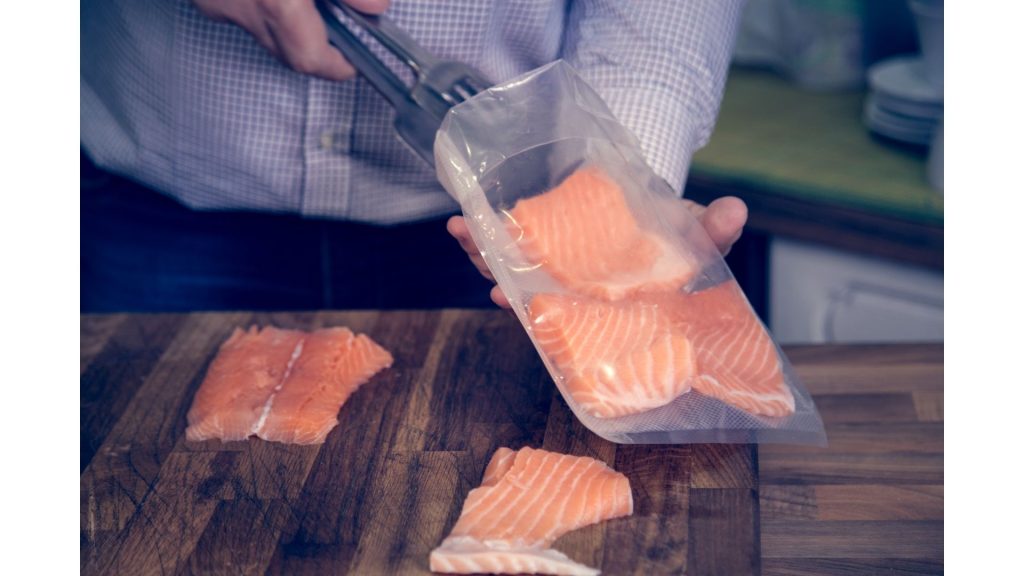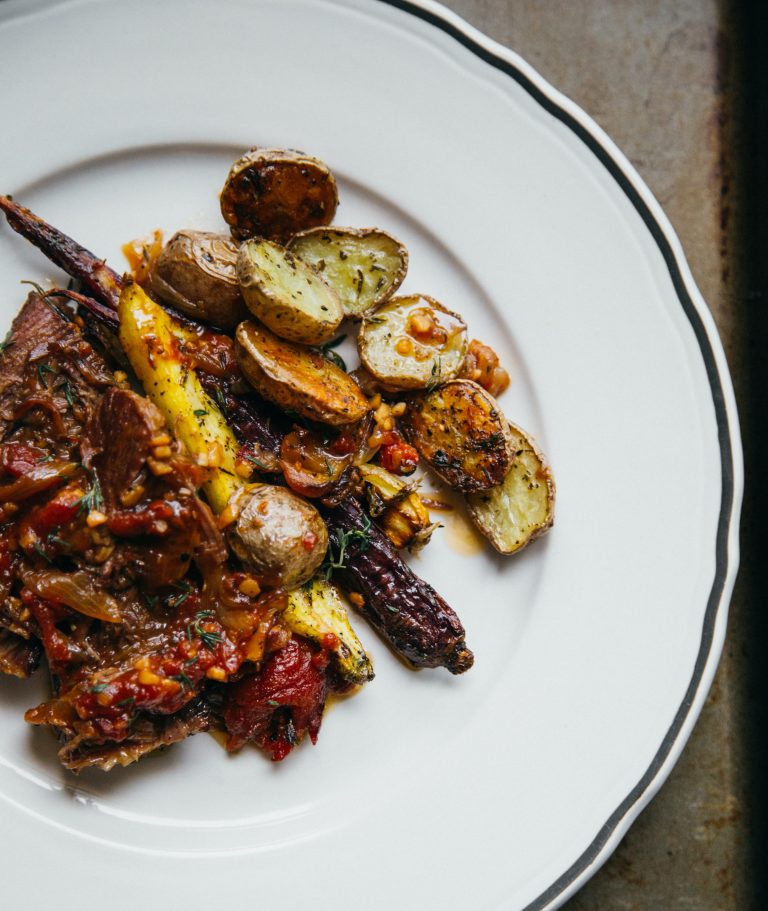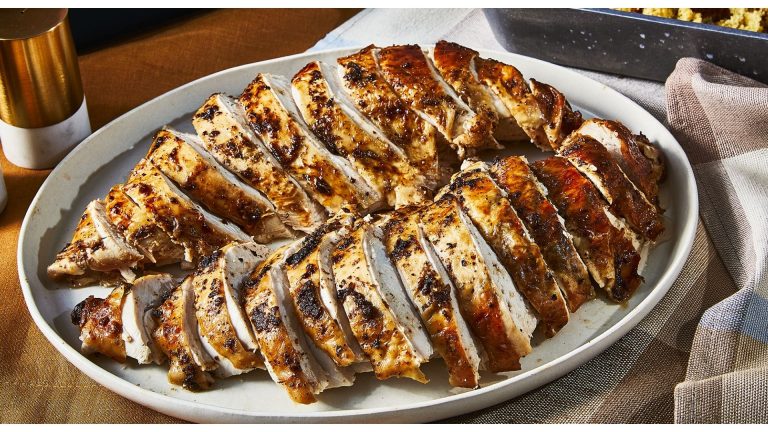How Long to Sous Vide Salmon?
Do you think chicken breasts are pretty delicate? It is beaten by a mile by salmon. With practice, you can get to the point of a perfect medium-rare center on a piece of pan-seared salmon.
Sous vide guarantees perfectly moist, tender results when practicing on salmon, and it can get pricey.
It’s possible to achieve the texture you never knew was possible, from flaky-yet-moist to meltingly tender.
Here in this article, we are describing the process of Sous Vide salmon. But before getting into the topic we need to know about sous vide. Let’s check it out.
Table of Contents
What is sous vide and why is it beneficial?

The term Sous Vide is French for “under vacuum” and refers to cooking food in a sealed bag.
It is one of the most innovative cooking methods today and if you are planning to eat sous-vide salmon then here is a complete guide for you.
Sous Vide is the method of cooking food in a special plastic bag which is vacuum-sealed.
The method is based on the fact that heat will be absorbed by the food, but not released because there is no air inside the bag.
This is a great method because it doesn’t let the food lose moisture, so the food doesn’t dry up. It also keeps the food juicy and tender even after long hours of cooking.
The best part is that this method is very easy to use. It is also used in hotels and restaurants because it saves a lot of time and energy.
You can buy this bag in any kitchen store or grocery store, but make sure that the bag is designed for sous vide cooking.
Salmon Sous Vide Recipe
Ingredients used in this recipe
- 4 salmon fillets (5 to 6 ounces; 140 to 170g each)
- Kosher salt
- 2 tablespoons (30ml) extra-virgin olive oil
- Aromatics such as fresh thyme, dill, parsley, thinly sliced shallots, and/or citrus zest (optional)
- 2 teaspoons (10ml) vegetable oil, if serving seared
Steps to Follow
These are the steps you need to follow.
Step 1:
You can find a ridge of thin, flexible bones on the surface of the fish by touching it with your fingers.
If you have a pair of needle-nose pliers, you can use them to pull out the bones. Pull the tips out by pulling along their length to minimize damage to the flesh around them.
If you get bones that are jutting from the cut faces along the sides of the slice, you should.
Step 2:
Use a knife and long strokes to slice through the salmon, making sure to cut through the skin as well.
Step 3:
Divide them into even portions of about 5 to 6 ounces. The resulting pieces are closer to the square in shape than the long skinny rectangles you’d get by portioning without splitting.
Step 4:
Sprinkle salt on the salmon. You can also use white or black pepper at this point.
Step 5:
The salmon portions should be placed in a single layer of zipper bags.
Add some olive oil.
Use your hands to turn the salmon and make sure it is coated on all sides to prevent it from sticking to the bag.
Step 6:
Fresh herbs such as parsley, dill, or thinly sliced shallots, can be added with some aromatics.
Adding large chunks of food can damage the shape of the fish or acidic ingredients can damage the texture.
After bagging, seal the bag and let the salmon rest in the fridge for at least 30 minutes and overnight for the salt to firm up the flesh.
Step 7:
While the salmon is resting, preheat the sous vide cooker according to the required temperature.
Step 8:
Remove the air from the bag, then add the salmon to the water bath, and cook for 30 to 45 minutes for one-inch filets or 45 minutes to an hour for filets up to two.
Finishing Steps
Step 1:
To remove the salmon from the bag, use your hands or a fish spatula and keep it supported at all times to prevent the salmon from breaking.
Place it on a double layer of paper towels and use another paper towel to dry it. Get rid of the aromatics at this point.
Step 2:
If you want, you can remove the skin at this point. It shouldn’t take long to peel right off.
You can serve the salmon as-is, chill it and serve it cold, or for a more classic presentation, sear it briefly before serving.
Step 3:
To sear, heat a thin layer of oil in a cast iron, carbon steel, or non-stick skillet over high heat until it shimmers.
If you want to make good contact with the pan, gently press on the salmon skin side down. Sear until the skin is brown and crisp.
If you want to give the salmon a touch of color, flip the second side of it.
Step 4:
Transfer the cooked salmon onto the paper towels to absorb excess oil. Serve immediately.
FAQ
Can you Sous Vide Frozen Salmon?
Yes! This salmon recipe is a total game-changer when it comes to cooking. It allows you to make perfectly juicy and tender salmon, every single time.
Sous vide is a way of cooking food sealed in an airtight bag where the temperature is controlled and the water inside is slowly heated or cooled.
The benefits of sous vide are many. You don’t have to worry about burning food and it cooks evenly, unlike boiling or baking.
Conclusion
Using Sous VIde to cook salmon is one of the most delicious ways to eat the fish.
There are several ways to cook salmon using the Sous Vide technique and here I am sharing the easiest way to cook salmon by using Sous Vide.
I hope you liked this post about How long to Sous Vide Salmon.

Foodie and a passionate cook, I am here to share all of what I know about cooking, kitchen, and food prepping.
Follow me for delicious and healthy recipes.







